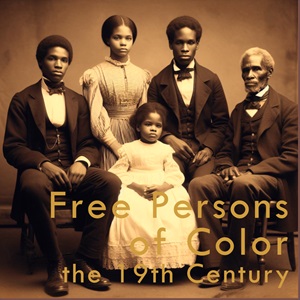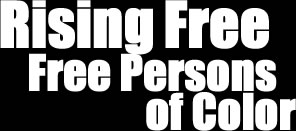

 |
 |
|
Study Areas Free Persons of Color |
Harrisburg CemeteryBlack History Perspectives Tour This large, attractive tombstone in the shape of a pulpit replaced a tall stone that was placed by Winebrenner's family and friends. |
Tour stop 8: Rev. John WinebrennerBorn into a slaveholding family in Frederick County, Maryland and raised in the presence of African American slaves, John Winebrenner experienced the institution first hand, and on a personal level. Despite having family ties to slavery, and friends who were slaveholders, he seems to have developed an aversion to the practice early in his life, and incorporated a strong anti-slavery doctrine in the church that he was to establish in 1830. John Winebrenner studied at Frederick, Maryland and later at Dickinson College, with an eye to becoming a minister. After preaching at the Harrisburg German Reformed Church in November 1819, the church, which was without a regular preacher at the time, unanimously elected Winebrenner to the position. The pastorate also included responsibilities for three rural churches: Shoops Church, near Harrisburg, Wenrich's Church, near Linglestown, and Salem Church in Cumberland County. He was ordained by the General Synod of the German Reformed Church in 1820 in Hagerstown and began his duties in Harrisburg that year. Salem Reformed congregation was the first congregation in Harrisburg assigned to newly ordained Reformed minister John Winebrenner. The Harrisburg Salem Church was not yet built when Winebrenner arrived in town, and it was largely because of his fundraising and organizing talents that the local congregation was able to construct a new church building at the corner of Third and Chestnut streets in 1822. There were, however, strong differences of religious opinion and style between Pastor Winebrenner and many in his flock. He was a young, ideological religious scholar, who brought to his post many new ideas regarding how the church should be managed, and he began making decisions that were normally made by the vestry, much to the vestry’s dissatisfaction. He upset his congregants by preaching at Methodist churches, and by inviting non-ordained visitors to preach from his pulpit. Perhaps most upsetting to the highly traditional members of his local church, though, was his revivalist style, with its attendant shouting, noise, and seeming lack of structure. By April 1823, the Harrisburg church had seen enough of his leadership to advocate for change. Taking matters into their own hands, the church vestrymen locked the doors to Salem Church one Sunday, and when Reverend Winebrenner arrived for services, he found himself locked out, with a large hostile crowd in front of the church on Chestnut Street. Winebrenner took his few loyal followers to the river, and there, in front of John Harris’ grave, he held an outdoor service in his own style. When it became apparent that he was not going to be able to wrestle back control of his post, John Winebrenner began holding independent services in various places, including the county courthouse, the market sheds on the square, and in the lumberyards next to the canal, just east of Market Street. A formal church building, called Union Bethel, was constructed on Mulberry Street in 1827, and in 1830, John Winebrenner had himself publicly baptized by immersion in the Susquehanna River by a local Brethren in Christ minister, Jacob Erb. This highly public act followed his numerous successful revivals around the Harrisburg area in the late 1820s, at which he organized the selection of "teaching elders," who took on a pastoral function. In October 1831, several of Winebrenner’s teaching elders met in Harrisburg, after agreeing on some basic theological principles the year before, and officially formed the Church of God. This new church was associated with social activism, and embraced such controversial topics as peace, temperance, free education, and anti-slavery. It was also not segregated by race. As a moral reformer, John Winebrenner had earlier been active in distributing religious materials among Harrisburg’s poor, including its African American citizens, and had helped to operate an African American Sunday School. He welcomed African Americans to worship with him at his revival meetings, and his church publicly baptized African Americans. These interracial connections would serve the anti-slavery movement in Harrisburg well, as John Winebrenner's followers, while working for the acceptance of African Americans as brethren, also worked to further the acceptance of anti-slavery philosophies locally. American Anti-Slavery Society lecturer Samuel L. Gould, a Quaker, was one of several traveling white speakers to visit the town in the 1830s. Gould spoke to African American residents at Wesley Church on New Year's Day 1836, and to a few white residents in Alexander Graydon's parlor a few days later. Not long after, Harrisburg's white abolitionists moved to incorporate their sentiments into an organized body. About one hundred men and women met on January 14th in the Mulberry Street Bethel of Reverend Winebrenner's Church of God to organize the Harrisburg Anti-Slavery Society. In that meeting, it was decided that the Reverend Nathan Stem, the Rector of St. Stephen's Episcopal Church, would take the post of President, while Dr. William W. Rutherford and Mordecai McKinney would share the duties of the Vice-Presidency. Schoolteacher Samuel Cross was appointed to the post of Corresponding Secretary. Reverend Winebrenner attended the 1837 state anti-slavery convention in Harrisburg on behalf of the Harrisburg Anti-Slavery Society, and later became the society's Corresponding Secretary. John Winebrenner published newspapers promoting the views of his new church, including anti-slavery articles. The Gospel Publisher (1835-1845) and The Church Advocate (1846-onward) so inflamed slaveholders in the South that issues were publicly burned in Richmond in October 1838 in protest of the anti-slavery content. The church joined with other abolitionists across the east coast in promoting the domestic production of silk as a counter to slave-produced cotton. Under Winebrenner, the church advocated the raising of silkworms by congregants and even imported mulberry trees from China, the leaves being the preferred food of silkworms. Winebrenner's Church of God, East Pennsylvania Eldership in 1844 appointed an African American man, Perry Stanton, as minister. Stanton was initially assigned to a mission in Carroll County, Maryland. Later, Reverand Stanton removed to Newville, in Cumberland County, Pennsylvania, and worked with Winebrenner and others in the cause of anti-slavery. Reverand Stanton organized African American congregations along the South Mountain range in Pennsylvania and later in Shippensburg, Newville, Carlisle, Mt. Holly Springs, and Harrisburg. He worked to recruit additional African-American pastors in these towns and cities. SourcesSee Lance Finley, "Some CGGC Black History," February 2015, for a good summary of John Winebrenner and anti-slavery. Online at https://cggcenews.weebly.com/blog/some-cggc-black-history-vol-9-no-9. |
|
Afrolumens Home | Enslavement | Rising Free
Original material on this page copyright 2024 Afrolumens Project
Photographs on this page by George F. Nagle.
The url of this page is https://www.afrolumens.com/rising_free/hbgcem09.html